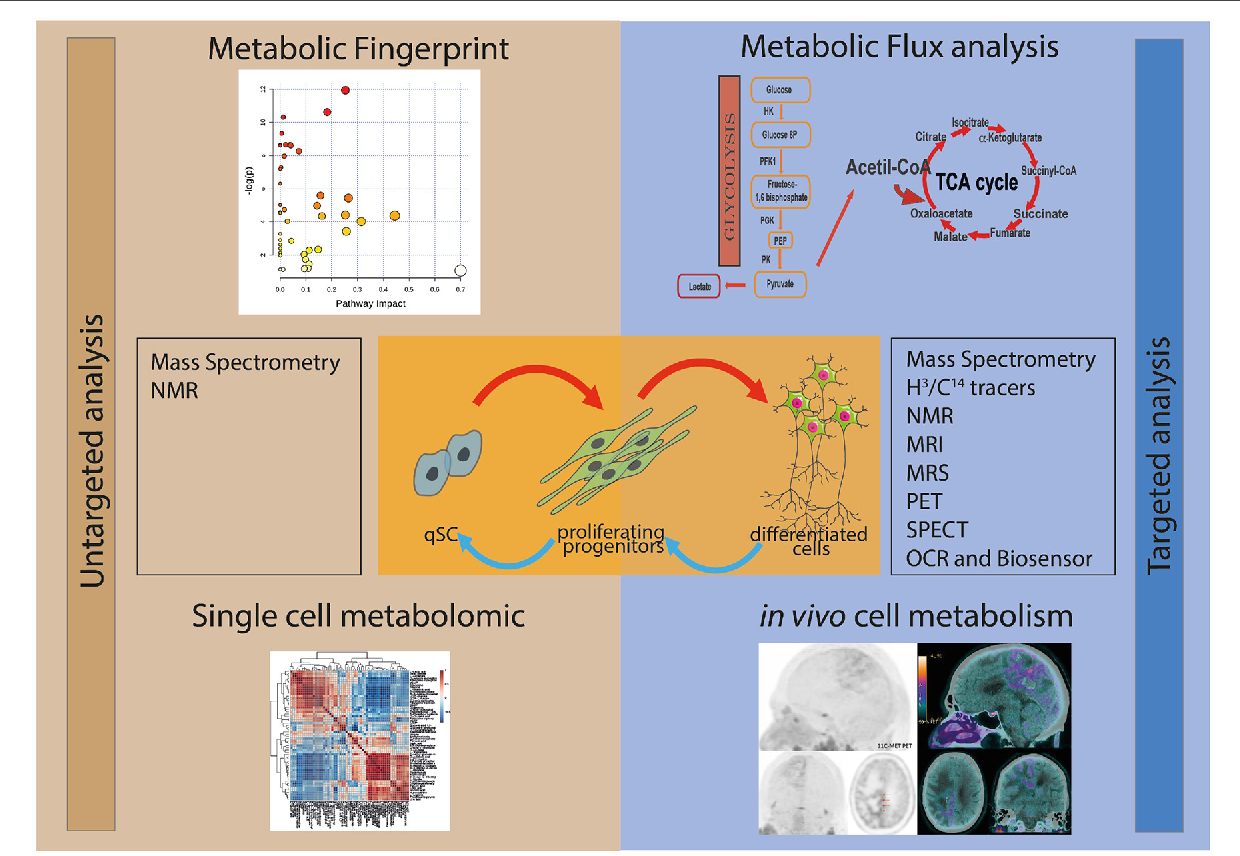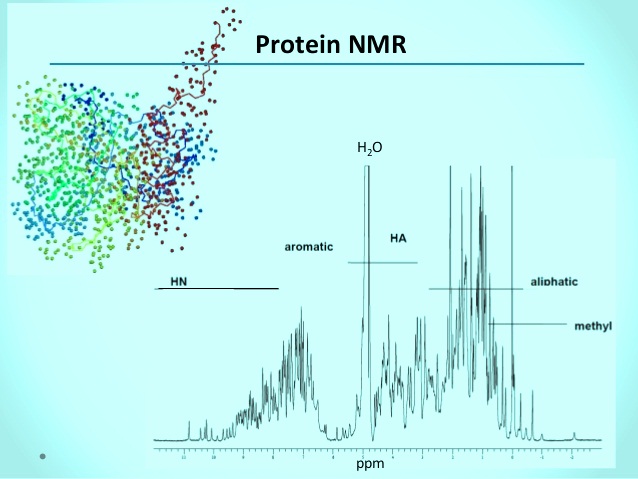Metabolomics as an interdisciplinary research field has attracted the attention of many scientists in recent years. One of the most powerful tools in metabolic studies is the magnetic resonance of the NMR core. In this article, an overview of the role of NMR in the early detection of disease and the discovery of biological indicators in metabolic studies to identify metabolites involved in various chemical processes (such as disease, drug use, comparison of several physiological conditions, etc. NMR is paid. It is like a window for accurate observation of most chemical compounds in biological fluids (serum, plasma, cell extract, etc.) and other samples such as tissue, organ, or other solid or semi-solid samples by state spectroscopy. Solid and NMR spectroscopy is spinning the magic angle without the need for sample manipulation and derivation of important biological fluids that researchers have to use in other analysis techniques. High reproducibility of work results, short test time compared to other techniques are the advantages of this method. The place of chemometrics and multivariate analysis (non-regulatory and regulatory analysis) in metabolism is of great importance for existing reasons
.

Nuclear magnetic resonance (NMR) spectroscopy is based on the emission of electromagnetic waves in the radio wavelength range. In NMR spectroscopy, unlike other atomic spectroscopes, the nucleus of an atom is involved in the absorption process. When the nucleus of an atom is in a strong magnetic field, there is a difference between the spin energy levels of the nucleus. Alignment and non-alignment orientations of the core spin lead to different energies. The phenomenon of nuclear magnetic resonance occurs when nuclei absorb energy in the same direction as the applied field and change their spin direction relative to that field. This is called resonance or resonance. Nuclei can be used and tracked in the NMR technique. Have an atomic number of one or a mass number of one or both. These include hydrogen, carbon 13, and phosphorus 31. First, the sample is subjected to radio waves, then these radio waves are received by a specific radio receiver and decoded by the Fourier transform algorithm, and the kernel language is converted into a language. The output of this technique in the production of a horizontal and vertical spectrum. The horizontal axis represents the chemical displacement and the vertical axis shows the intensity of the signal from the magnetic field. Different groups of molecules can be identified with the help of the obtained peaks. The methods used to identify and diagnose diseases require the use of invasive and costly methods and access to the target organ, requiring surgery and complex medical methods, but using non-invasive spectroscopy techniques can provide essential information about the mechanism. Provided metabolic diseases to increase human understanding of the cause of the disease.
Meanwhile, the field of metabolic research as a relatively emerging field has been able to attract the attention of many researchers. Metabonomics can be defined as the science of metabolomics or the study of the quantity and quality of metabolites in response to a pathogenic stimulus or genetic alterations in a living system. Metabolites are organic molecules with a molecular mass of less than 1,500, including compounds such as sugars, nucleosides, organic acids, ketones, amino acids, lipids, steroids, aldehydes, amines, amino acids, lipids, steroids. He mentioned aldehydes, amine alkaloids, food, drug additives, etc. In the figure below, you can see the NMR spectrum obtained from a protein:

Importance and benefits of nuclear magnetic resonance spectroscopy in metabolic research
Metabolic studies are based on two important techniques of mass spectrometry (MS) or atomic nucleus magnetic resonance, each of which has advantages and limitations. Among the advantages of the NMR technique over MS are the following: Separation of analytes It does not require a raw sample and is a non-destructive technique, ie the sample is recycled after spectroscopy. The high reproducibility of the data and the quantitative ability to work with it and the wide dynamic range and the possibility of identifying unknown compounds with two-dimensional methods are the advantages of NMR. With the help of this technique, metabolic pathways can be traced by selecting isotope labels. Contrary to what is considered a limitation in the MS technique, this technique identifies compounds that are difficult to ionize or difficult to identify by derivation. Another important advantage of the nuclear resonance spectrum technique is that it can be used in addition to identifying effective compounds to obtain dynamic cell information. Therefore, physiological challenges such as exercise can also be examined using the core magnetic resonance spectrum. Common techniques of inactive nuclear magnetic resonance spectroscopy include 31P-NMR, 13C-NMR, and 1H-NMR. One of the limitations of 31P NMR is that the signals of phosphorous compounds overlap in metabolic compounds.
One of the important goals of metabolomic studies is to discover the biological indicators involved in biological processes. In fact, a biomarker can be defined as a molecule, gene, or trait that occurs naturally and is measurable in biological conditions and can be the cause of a biological disorder caused by a disease or a change in homeostasis. . Biomarkers can be studied to diagnose or predict disease, as well as to measure the biological responses of some drugs. Biomarkers include a wide range of chemicals, metabolites, genes, RNA transcripts, or complexes of proteins, ligands, etc. As mentioned, with the help of magnetic resonance spectra as a Non-invasive technique obtained information about metabolites involved in chemical interactions involved in cells and examined the role and function of metabolites in cellular networks and presented them as a biological indicator.
Metabolic studies in the study of diseases using 1 H-NMR
Extensive diseases have been studied by the NMR technique so that 659 diseases can be examined with the help of metabolism. Diseases such as cancer and various cardiovascular diseases. Obesity is one of the most cited diseases studied with this technique. Large-scale epidemiological studies based on NMR are among the hottest topics in this field and new materials are published every day in this regard. This field has discovered new biomarkers for various diseases and has played an important role in understanding diseases and has shown the ability to predict disease risks and drug effects. Among these extensive studies, we can mention studies on celiac disease. . Celiac disease is a multifactorial disease affected by the environment and genetics that negatively affects the immune response of the individual and is considered as an autoimmune disease and by disrupting energy metabolism causes a person to be intolerant to products containing gluten. Studies on serum and urine samples have been performed by independent research teams on people with the disease.
One of the most interesting findings was that people with potential celiac disease (silent celiac disease), ie those who tested positive for tissue anti-transglutaminase antibodies but had no symptoms or minor intestinal damage, in metabolic studies and results from The subjects were classified as having celiac disease in the metabolic studies and the results obtained from the subjects, indicating the fact that the metabolism of celiac patients predates clinical manifestations and multiplies the importance of this field.
" 核磁共振波谱在1H NMR辅助代谢研究中的重要性和益处 " , " Bedeutung und Vorteile der Kernspinresonanzspektroskopie in der 1H-NMR-Stoffwechselforschung" , "Importanza e vantaggi della spettroscopia di risonanza magnetica nucleare nella ricerca sul metabolismo 1H NMR"